

|
|
Munda Airfield
The following narrative and 3 "Tasks", provide an overall picture of the Information provided by Doug Graff-Comella.
Pacific War as it concerned the USS Helena CL-50 and the US Navy during WWII.
Doug's Father was among those killed when the USS Helena CL-50
was sunk by the Japanese on July 6, 1943.
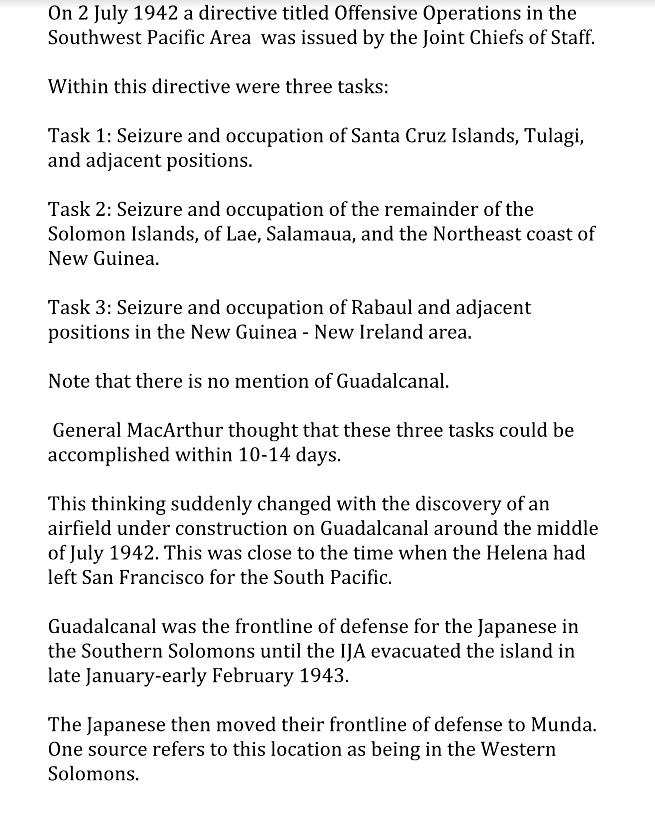
Narrative
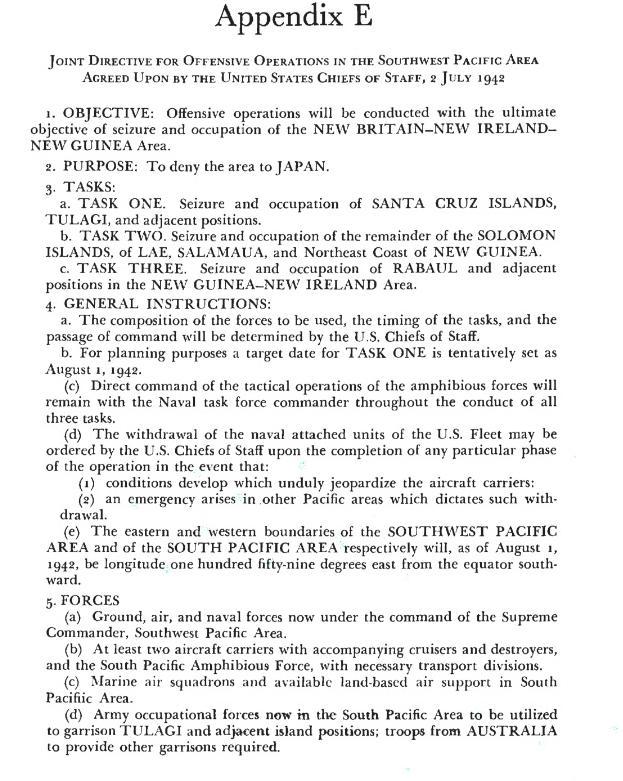
United States Army in World War II
The War in the Pacific
Strategy and Command : The First Two Years
Page 619
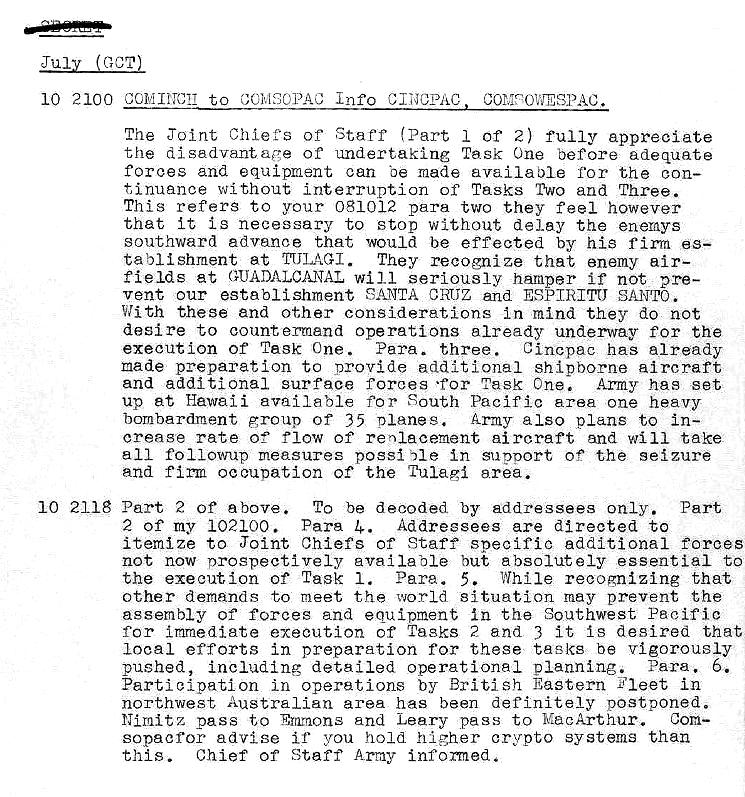
10 July 2100 PINK
Nimitz Grey Book
Volume 1
Page 620
SECTION I
1.
Summary of the situation.
As the result of the battle in the Coral Sea and off
Midway, Japan has suffered |
Summary of the Situation
Nimitz Grey Book
Volume 1
Page 714
A Japanese directive in late October 1942 called for an air base to be built at Munda Point, about
Construction began in mid-November with a great emphasis on keeping the forward airfield secret.
Despite these efforts, reports of the strip were relayed to Guadalcanal via coastwatcher Danny Kennedy
Opened on 1 December 1942, it was used by the Japanese Navy and Japanese Army Air Force as a
Munda airfield was the principal objective of the Central Solomons campaign, also known as Munda or
Once seized, the Americans improved and expanded the airbase for their own operations. The first Narrative provided by Wikipedia |
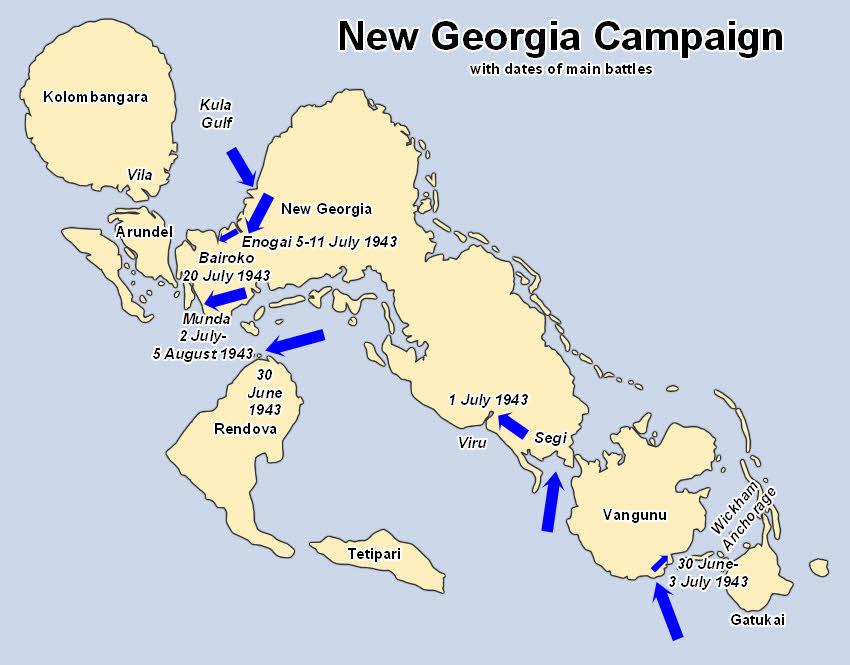
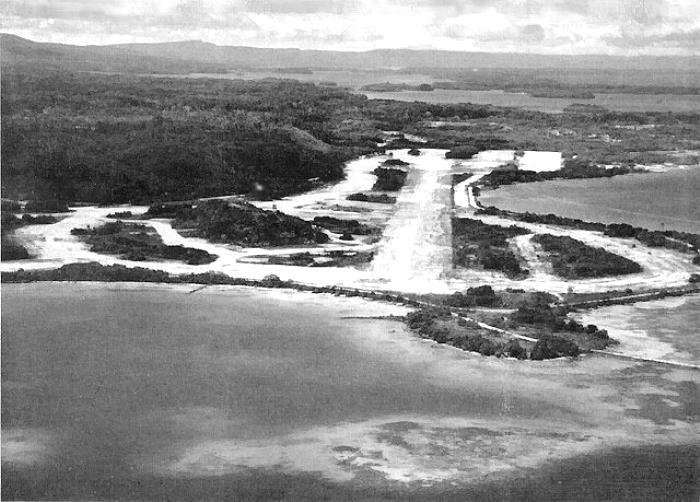
Looking eastward, over Munda Field, toward the scene of battle, this post-war picture shows |
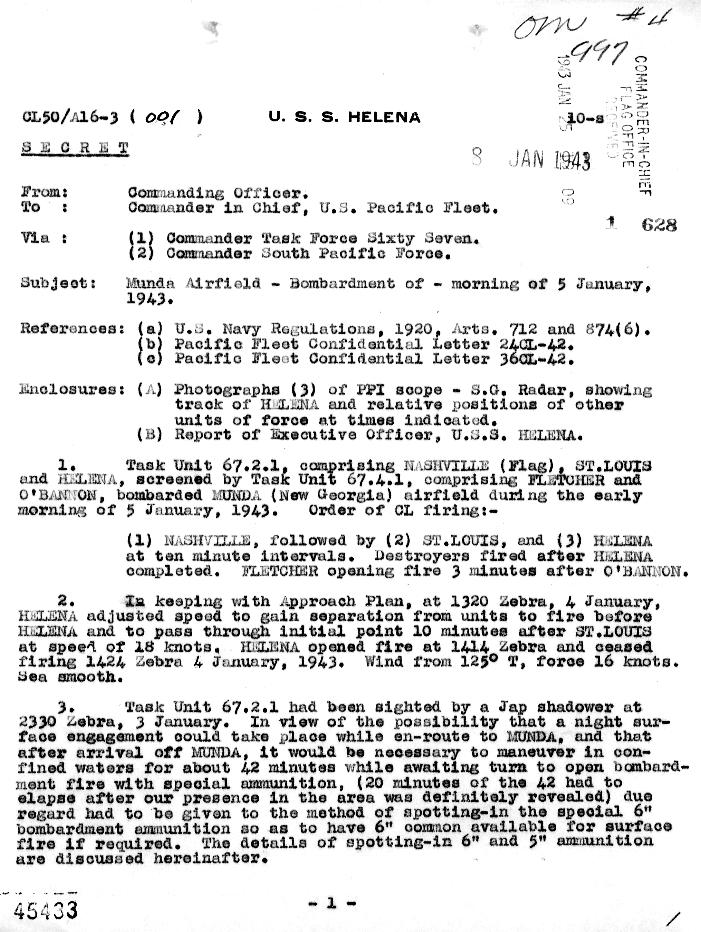
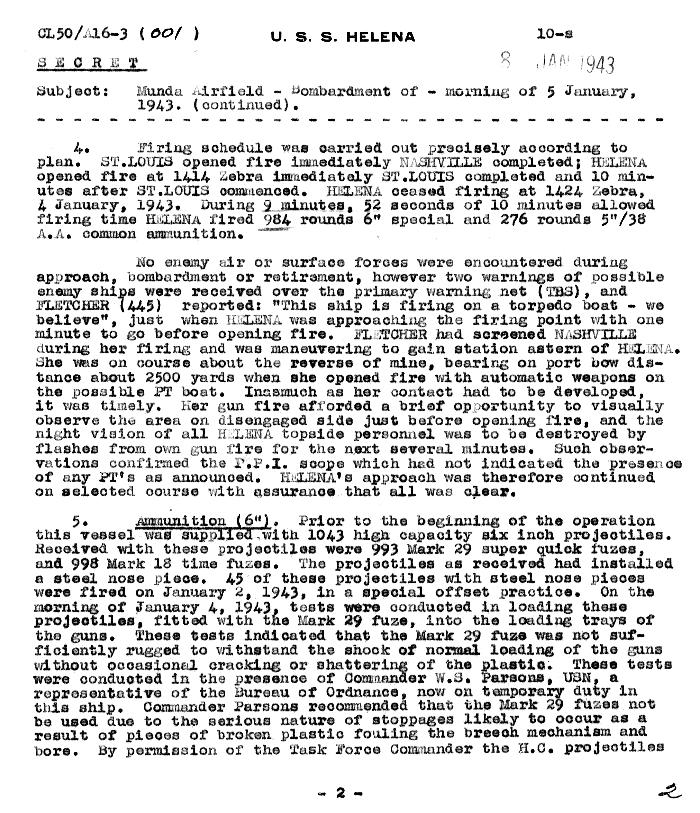
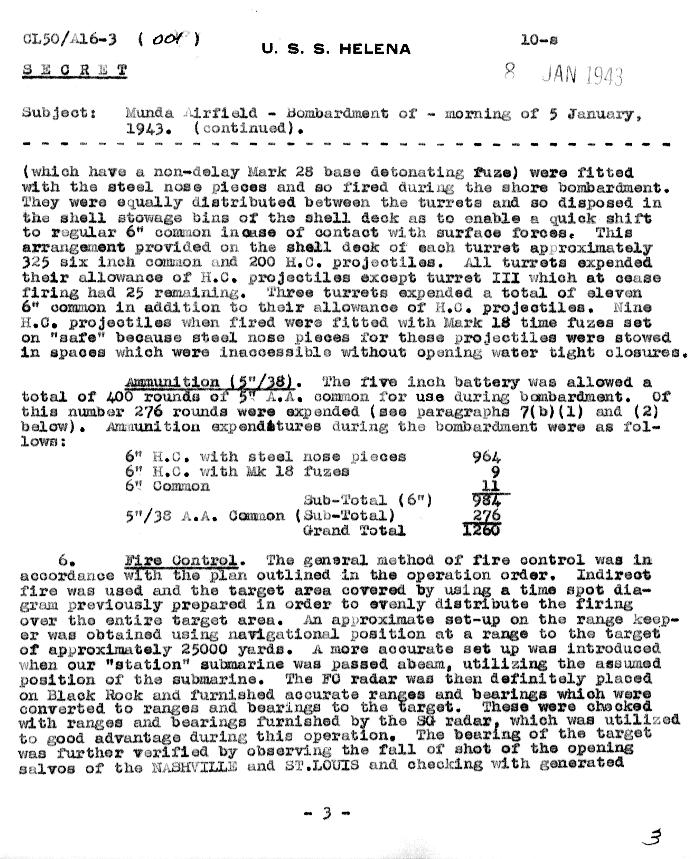
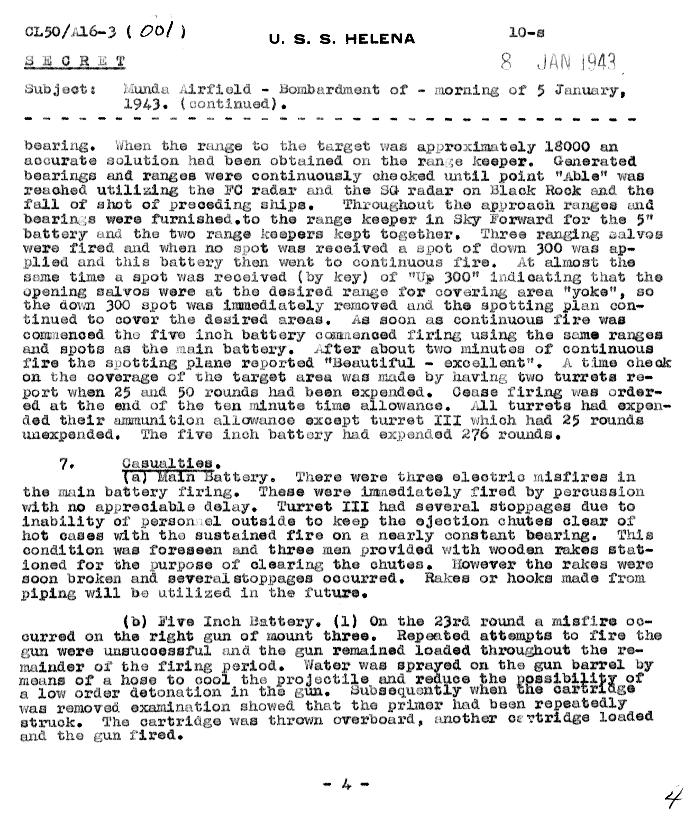
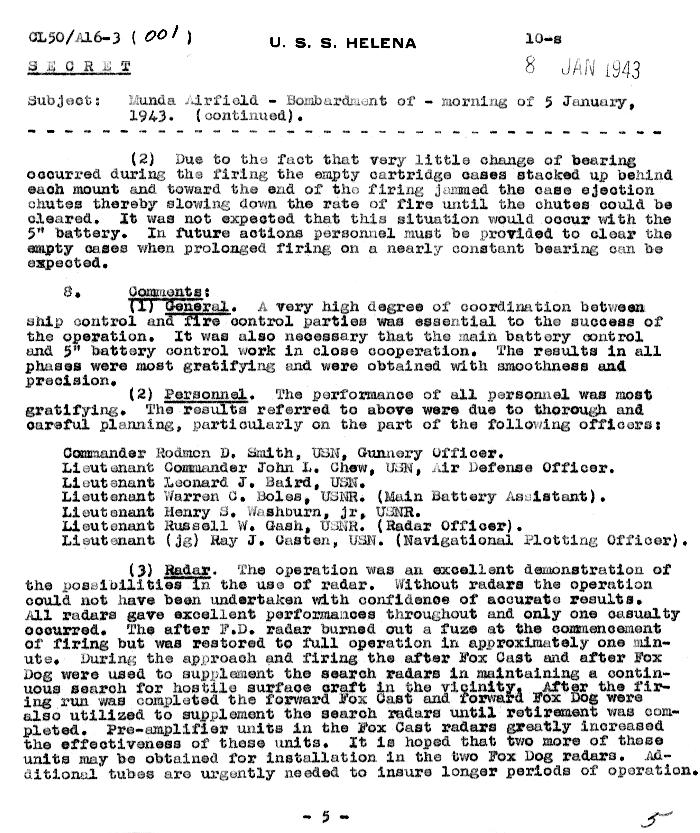
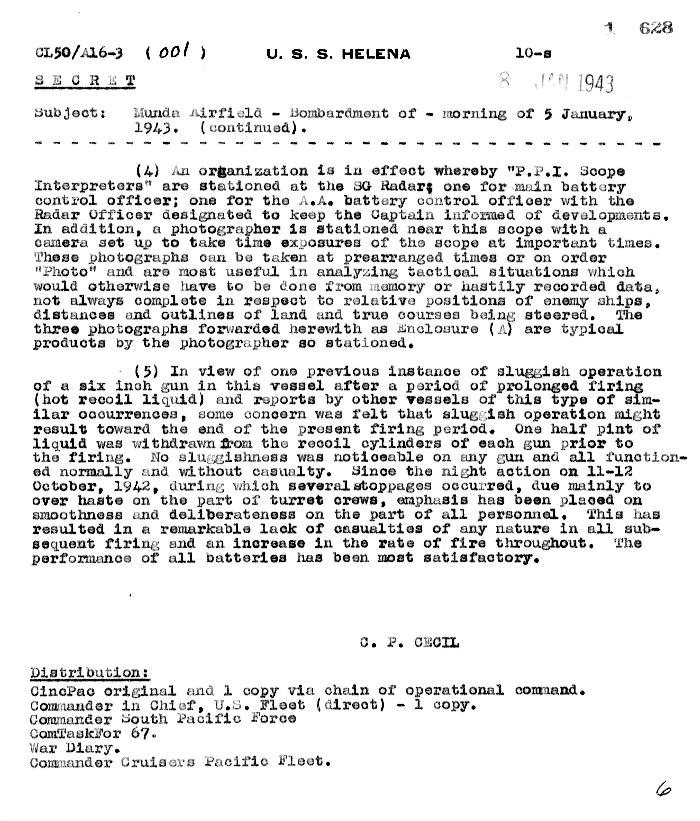

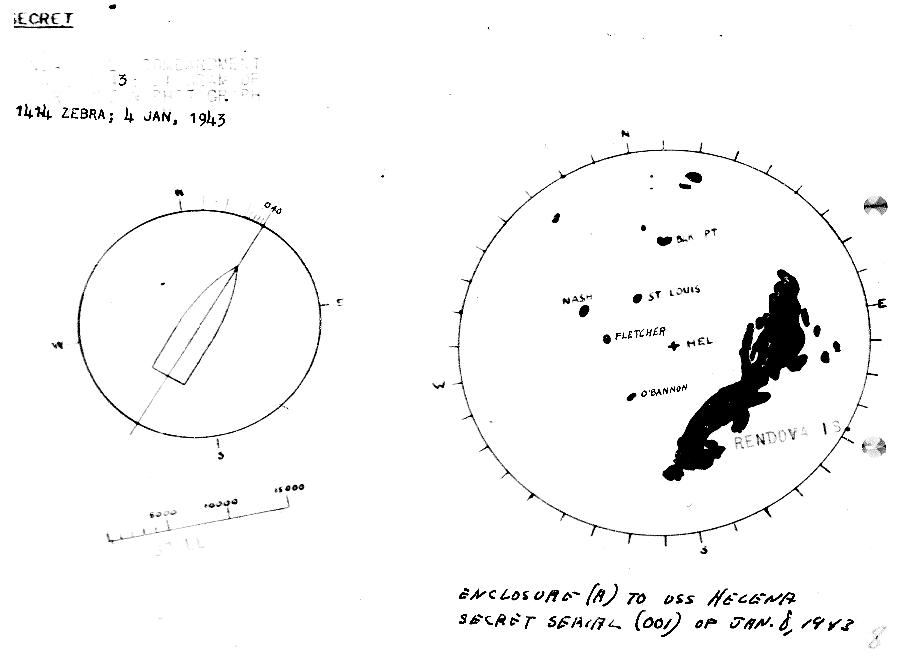
Narrative in the upper left corner reads as follows:
MUNDA FIELD BOMBARDMENT
0114 1/5/43 DIAGRAM OF
RADAR SCREEN PHOTOGRAPH
1414 ZEBRA; JAN, 1943
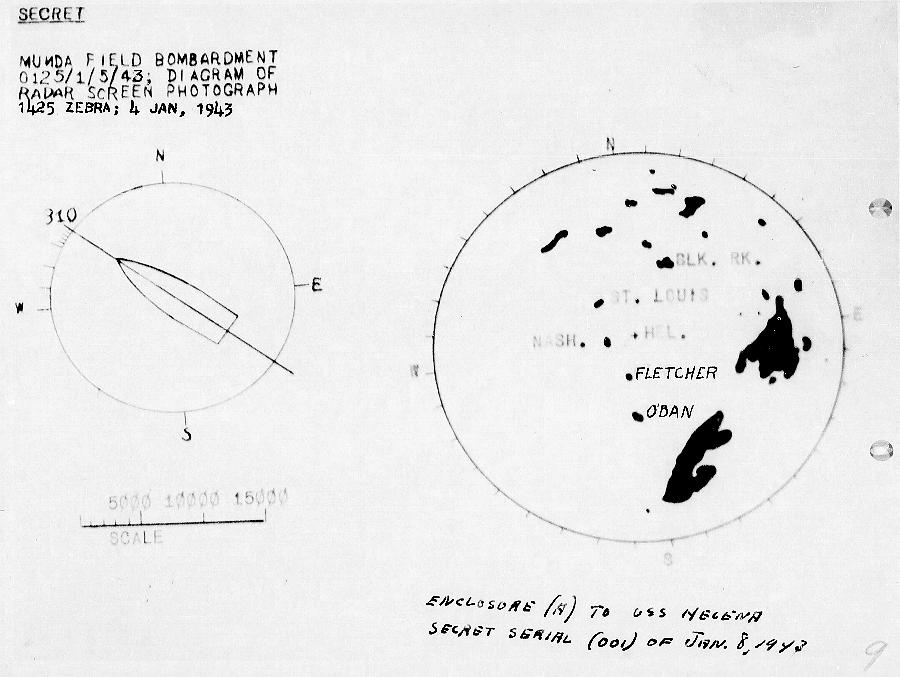
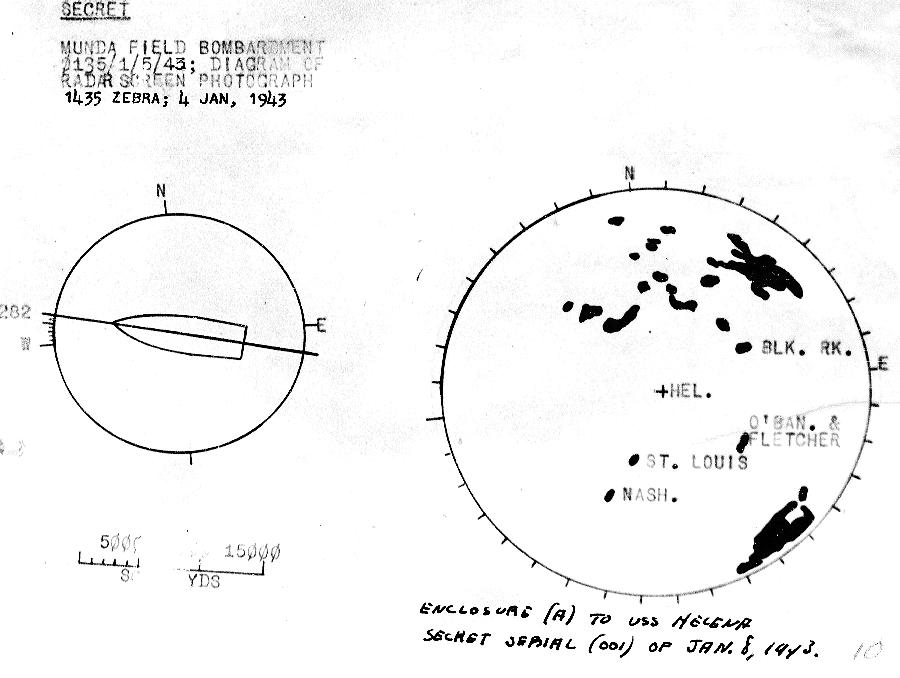
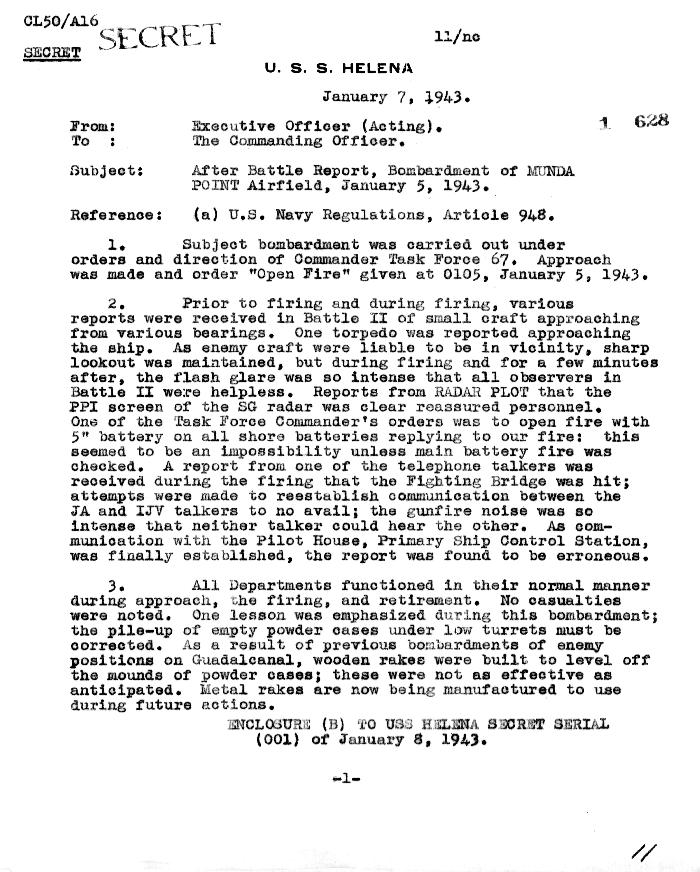
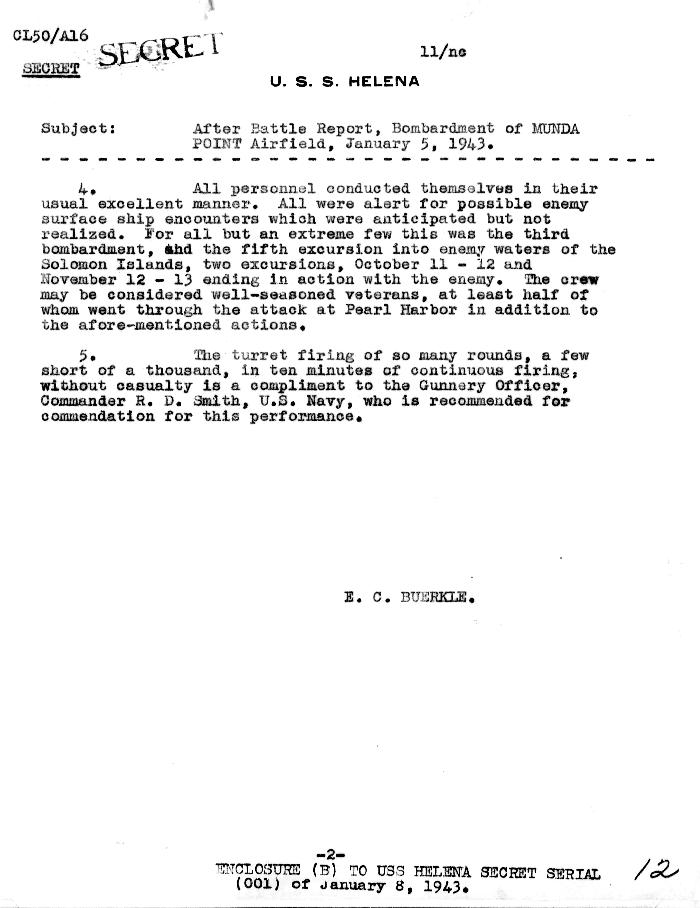
Watch a WWII movie. Life Line To Rendova Island. View with discretion.
Some scenes may be 'OFFENSIVE' .
A 1943 World War Two Educational Documentary.
Time: 16 minutes 52 seconds.
Click HERE!